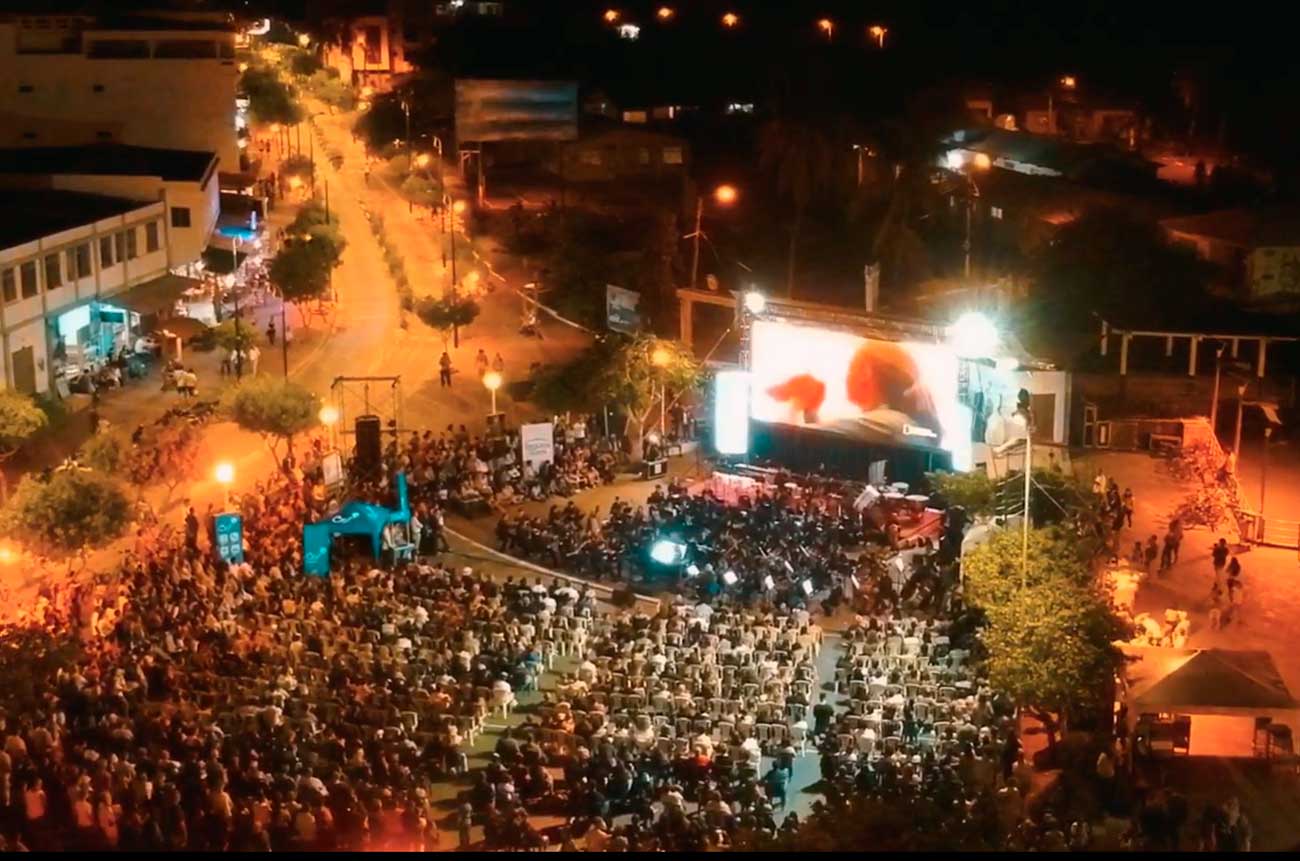HISTORICAL BACKGROUND
The National Geographic and the Inception of an Idea.

I invited Philip Glass to the South American premiere of his Eighth Symphony in Guayaquil, Ecuador, in December 2017. After the concert, I took him for a short vacation in the Galápagos. When we arrived at Puerto Ayora, we had a chance to share our thoughts on music, our performances, and projects. After visiting the Charles Darwin Research Station, I commented on some facts I had learned when I first arrived in Ecuador: the archipelago’s ostensible importance as a sanctuary of environmental protection, the World Travel Agency marking it as a privileged destination, and the seclusion of its community, due to the established preservation of its flora and fauna.
I told him that it would be ideal to create a music school here, as there were none. I also explained that I wanted to teach music in a way that reflected the many types of education I had received during my adolescence – which made me who I am as an artist. My musical training ran parallel to my high school studies in the humanities and sciences, and later on to mathematics in university. This way, I combined these four disciplines when studying composition and, eventually, conducting at Yale University.
Philip answered that I could create a musical event to formally propose that kind of project. He added that he could help me: he offered me his musical work «Jane,» the soundtrack from the National Geographic film about the life of Jane Goodall. We then discussed the implications of her lifelong calling and being a leader for causes that redefined the relationship between humans and animals. As one of the most important conservationists on the planet, she brought the issue of deforestation to the spotlight; one of several issues contributing to the current environmental crisis.
He then made a concrete offer to make his music available to me. I requested permission to perform the music ‘live’ in the Galápagos, accompanying the simultaneous screening of the film itself, thus proposing this South American film premier to National Geographic. It took me months to put the whole operation together, getting support from National Geographic, bringing the entire Guayaquil Symphony Orchestra to the Galápagos, rehearsing and presenting the film to the public, and performing several programs live in Puerto Ayora.
In all our concerts for the first edition of our so-called «Music for the Planet Festival 2018,” I would speak to audiences about the inherent power of music as a tool to connect people. I referred to it as a method of achieving a better comprehension of our inner world, and as a wonderful activity that creates numerous neural connections in our brains, affecting our limbic system – which processes emotions and memory. Eloquently, music is a wonderful tool for being cognizant of ourselves – of our senses when enjoying and listening to it, of our bodies as we play, of our feelings when being moved by a performance. I also reiterated the old idea of self-knowledge being the beginning of wisdom. I imparted the idea that “knowing one’s internal world reflects one’s superior knowledge of the external one.”
After a couple of symphony concerts, we presented National Geographic’s Jane. Our concerts had gathered a crowd, and we had the largest event attendance in the history of the Galápagos; there, under the open sky. And at that moment, the idea’s inception became real, palpable, and unmistakable.
